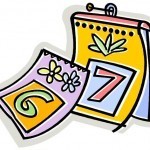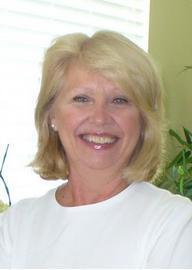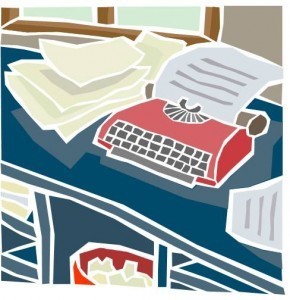Jennifer Becton's Blog, page 59
March 2, 2011
Congratulations Finalists!
Congratulations to the ten finalists in the Jane Austen Made Me Do It short story contest hosted by The Republic of Pemberley and Austenprose! A special shout out to Jessica Melendez, my Twitter pal, for making the cut with her wonderfully imaginative and funny story "Attempting Elizabeth."
Best of luck in the next round!
March 1, 2011
The Winner of Darcy and Fitzwilliam Is…
There were 10 entries in the giveaway of Karen Wasylowski's new novel Darcy and Fitzwilliam provided by Sourcebooks. Several people entered both through this blog and through Twitter, and I entered all the names in a cool random name picker. (Of course, you may see some names twice because they entered both ways.)
So without further ado, the winner is:
Margay, email me your contact info and I'll forward it on to Sourcebooks.
Congratulations and happy reading!
Self-Pubbing: 6 Months In
 It has been six months since the release of Charlotte Collins: A Continuation of Jane Austen's Pride and Prejudice, my first self-pubbed novel. If you happen to be new to this blog, please go here to read about my adventures. After six months, Charlotte Collins has sold more than 2,400 copies. And at this point, I have already "earned out my advance," if I had gotten a standard first-time author advance.
It has been six months since the release of Charlotte Collins: A Continuation of Jane Austen's Pride and Prejudice, my first self-pubbed novel. If you happen to be new to this blog, please go here to read about my adventures. After six months, Charlotte Collins has sold more than 2,400 copies. And at this point, I have already "earned out my advance," if I had gotten a standard first-time author advance.
Because the publisher strongly believed that a book about an Austen minor character would not sell well, I was sent a list of sell-through numbers for a set of books about minor characters versus major characters to prove their point. I don't think it wise for me to release the titles and their corresponding sell-through numbers; releasing numbers is up to the author, but I will give the sell-through numbers without titles, so you can see them:
Minor Characters or Non-Pride and Prejudice Sequels
1,000
5,000
3,500
200
150
2,000
2,000
2,200
Major Characters from P&P
5,000
40,000
170,000
120,000
50,000
Let's break this down.
Sell-through, according to that bastion of accurate knowledge Wikipedia, "refers to a percentage of units shipped which are actually sold. In the case of books, the rest is returned to the publisher…. Sell-through is always expressed as a percentage. Net sales essentially refers to the same thing, in absolute numbers." So what I have here is actually net sales, but still, the point remains the same.
In the traditional publishing world, a book is published and bookstores purchase a certain number to put on their shelves for sale. After a certain period of time–and I'm talking a few months at most–they return the unsold books in order to make room for new books on the shelves. So if you happen to be in a niche market, you may never have time to find your audience before booksellers remove your offering from their stores.
Online book-selling has certainly changed this. When you sell online, you have infinite shelf-space. You can take time to build your readership slowly without the pressure of being forgotten after one month. But still, publishers are thinking in terms of physical bookstores, not in online sales. Certainly, these books have sold copies online since these sell-through numbers were caluclated. And in this changing market, the fact that they are still using sell-through figures to describe their sales is really saying something about the publisher's mindset and emphasis on physical retailers.
You'll note that Charlotte Collins has almost outsold all the books about minor characters in the list. Why? Is it a better book? I doubt it. There are some really well-respected authors in that list. Any number of factors could influence sales: covers, marketing, book descriptions, luck. But I have a theory that these books just never had the chance to find their audience before being removed from most major physical retailers.
Another tidbit to be drawn from this is that there is a large audience out there; 170,000 people have already shown interest in these types of books. It's just a matter of finding them, and as a self-published author, you have all the time in the world to find your readers.
So, in the next six months, I'd love to see Charlotte Collins reach a total of 5,000 readers. Then, it'll be on to the other 165,000 Austen sequel fans left out there.
February 25, 2011
Fraud Friday: Insurance Fraud? Really?
 Yeah, I know. Insurance fraud sounds pretty dry. Can a novel that centers around this topic possibly be interesting, entertaining, sexy, and exciting? Well, I'm sure going to try to make Absolute Liability all those things.
Yeah, I know. Insurance fraud sounds pretty dry. Can a novel that centers around this topic possibly be interesting, entertaining, sexy, and exciting? Well, I'm sure going to try to make Absolute Liability all those things.
Even though it sounds like insurance fraud is a white collar crime in which criminals do nothing more deceitful or thrilling than moving some numbers around a spreadsheet or claiming a bit more of a loss than they really experienced, this type of fraud can be a little more, well, animated.
Consider this true story from the Odditorium:
Body of evidence unburied. The plot seems right out of a ghoul novel…but Molly and Clayton Daniels dug up the grave of an elderly woman, dressed her in Clayton's clothing, stuffed her body in their car and pushed the vehicle off a cliff. The Leander, Tex. couple wanted to collect $110,000 in life-insurance money, hoping the insurer would believe the charred body in the burned-out car was Clayton. Soon after the seemingly fatal crash, the dearly departed Clayton mysteriously reappeared as Molly's new live-in boyfriend, one "Jake Gregg." Clayton had died his hair and wore a new mustache. The couple even forged fake a birth certificate, high school transcript and driver license. But DNA testing of the elderly woman's body helped prove "Jake" was Clayton. Molly received 20 years in prison, and Clayton at least 10 years.
That plan was just all sorts of wrong. Grave robbing, vehicle arson, faked death, false identities…well, that all adds up to an interesting story to me.
After that, we'd need some complex characters to investigate these wacky crimes and to interact with the oddballs who would concoct such ill-conceived schemes. Enter Julia Jackson, former cop turned fraud investigator.
Pretty soon, I'll be releasing the first in my Julia Jackson short story series. Until then, check out an excerpt from Absolute Liability if you haven't already. It's still a work in progress, but you'll start to get to know Julia a bit. I hope you'll like her as much as I do.
February 24, 2011
Charlotte Collins and Character Development
Today, my novel Charlotte Collins was used in a blog post by Nancy Kelley about character development, and it just made me giggle with glee to be used as a positive example of something so critical to good storytelling. I just have to share it with you.
Nancy is a fellow Austen author who will be releasing her newest novel this year. (I hope very soon!) Her blog is always fun to read. She even has a romance novel title generator to play with.
Go on over and tell her Jennifer sent you!
February 23, 2011
The Secret of Your Charm
The following picture was Tweeted by Victorian London, who is a great person to follow if you're on Twitter, just a few mintues ago, and it simply must be shared…you know, in case any of you women out there need to recapture some of that "air of refined delicacy." This ad for Dulc-o-do deodorant is circa 1920.
Enjoy.
February 21, 2011
Publishing Fear Free: Partners
 Choosing the right partners for your self-publishing business venture is critical. At this point, you will likely want to have both a paperback and ebook version of your novel or non-fiction book, and this means you'll be partnering at least two companies: a printer/distributor and an ebook seller/distributor. So let's talk about physical books first:
Choosing the right partners for your self-publishing business venture is critical. At this point, you will likely want to have both a paperback and ebook version of your novel or non-fiction book, and this means you'll be partnering at least two companies: a printer/distributor and an ebook seller/distributor. So let's talk about physical books first:
With the advances in printing technologoy, I recommend using a Print-on-Demand (POD) service. In the olden days of publishing, a self-publisher had to order a certain number of books, which required a large outlay of cash and a place to store them all until they could be sold. And while this avenue is still available, this is a huge financial risk, and it is one you do not have to take. With POD and online bookstores like Amazon and BN, there is no requirement to purchase any books upfront, and in fact, they are only printed when a customer orders one from a retailer.
But isn't that slow? No. I have found that POD books can be created and shipped in less than 24 hours.
But what about quality? Well, as far as ink and paper, I can see no difference in my POD book and any other paperback out there. However, the covers are all glossy, and many on bookshelves today are matte. There is no raised relief type option. It's just a very nicely printed glossy cover.
I chose to do business with CreateSpace, an Amazon-owned printer/distributor of paperback books. The book is automatically listed on Amazon and distribution can be expanded to include other retailers such as BN and to libraries etc. Even though I had a cropping error on my first proof, I have no complaints whatsoever with CreateSpace. Their customer service was excellent and the matter was resolved with no pain. Five stars.
You may also choose to investigate Lightning Source for your paperback. Their process is a bit more challenging in that you have to set yourself up as a publisher to use their service. They are also a bit more expensive per book, but I have heard that the quality is similar.
These two printers are responsible for many paperbacks out there today, including those of larger publishers.
For more information and a wonderful, in-depth comparison of both printers, read Robin Sullivan's post here.
If you must have a hardcover, look into Lightning Source or Lulu.com. I elected to forego this option because it made the book too expensive, and one of my goals was to be as economical for the book-buyer as possible.
Now for ebooks: I recommend three companies for your ebook distribution.
I use Amazon's Kindle Direct Publishing for my Kindle edition. The folks at Amazon really got this right. I did have a bit of trouble finding a good guide for formatting at first, but then I came upon the Smashwords Style Guide and my problems were solved. More about that in a bit. Their reporting is fast and accurate, and their customer service is wonderful. Your book is treated the same as any traditionally published offering; you get the same exposure using the "customers who bought this also bought" feature and their search engine is thorough. Five stars.
I also use BN's PubIt!, which is their version of KDP. This is a very new service and promises one day to be like KDP. Unfortunately, I have had nothing but trouble with it so far. My file was corrupted during upload, resulting in a page count error. Their sales reporting is very slow, and they have frequent glitches. Sales reports were blank for all of January, meaning I had no idea if my marketing was effective. PubIt also seems to segregate the traditional and self-published books and treats the two differently. Self-pubbed books do not have access to all the marketing features such as "customers also bought." And BN's search engine is awful. Half my search keywords do not work, and at this time, my book is basically unfindable unless you seach the title or my name. Casual book browsers will never find it. PubIt's customer service needs work. They direct people to an unmonitored "help board" and take forever to respond to email queires. There is no phone number, and no one at BN seems to know anything about PubIt if you call there. I have had no end of frustration with PubIt, but I do have high hopes that when they get it together, it will be just as good as Amazon. I think they underestimated the number of people who would want to use their service and that they will soon have things worked out. So three stars with room to grow.
Smashwords is my distributor to all other ebook retailers–iBookstore, Kobo, Sony, and Smashwords.com. I am pleased with this service; it's easy and it gets you into retailers that indies cannot access alone. They provide an in-depth Style Guide, which can be used to format any ebook, not just those destined for Smashwords. You upload one file, and the Smashwords Meatgrinder program converts it into all relevant ebook formats. Then, you can elect to open distribution to any retailer you chose, including Amazon and BN. My only issue with Smashwords is their slow reporting. Their customer services is excellent though. Four stars.
So, those are my partners. I've enjoyed working with them all, for the most part, and I am certain that as this method of publishing catches on, further improvements will be made.
February 16, 2011
Can Indies Be Successful?
I mentioned the names of several successful indies in my first Publishing Fear Free post, and here is one you should pay attention to: Amanda Hocking.
She currently has about 7 self-published books in the top 100 on Amazon and her Trylle Trilogy has just been optioned for a screenplay.
Does she have a traditional deal? Nope.
The world, it is a changin'.
February 15, 2011
Karen Wasylowski Skids in Sideways
 Please welcome Karen Wasylowski, a fellow Austen author, whose new book Darcy and Fitzwilliam: A tale of a gentleman and an officer
Please welcome Karen Wasylowski, a fellow Austen author, whose new book Darcy and Fitzwilliam: A tale of a gentleman and an officer  was released on February 1, 2011, by Sourcebooks. I have not had the pleasure of reading Darcy and Fitzwilliam yet, but it got a great review at Jane Austen Today. And as you know, I love to read about minor characters from Austen's canon, so I am greatly looking forward to reading Fitzwilliam's tale.
was released on February 1, 2011, by Sourcebooks. I have not had the pleasure of reading Darcy and Fitzwilliam yet, but it got a great review at Jane Austen Today. And as you know, I love to read about minor characters from Austen's canon, so I am greatly looking forward to reading Fitzwilliam's tale.
Without further ado, Karen Wasylowski!
____________________________________________________
Mrs. Maria Fitzherbert
by Karen Wasylowski
One of the characters in Darcy and Fitzwilliam is an actual figure in British history; Mrs. Maria Fitzherbert, a Catholic widow who for a short period of time came to be known as "Mrs. Prince."
But, the story begins much earlier. In the beginning of the nineteenth century the center of the fashionable British scene, the "first gentleman of Europe", the Prince of Wales, the buddy to Beau Brummel, the friend of rakes and drunkards was the future King, George IV. He became the Regent of England during one of his father's 'insanity' episodes and was popular with the people, appearing to them the essence of the old days. He hunted, kept packs of hounds, drank, and had numerous and famous affairs, several turning into rather vulgar embarrassments.
And just when they thought the lad was going to hell in a handbasket there entered the love of his life – Maria Anne Smythe, better known as Mrs. Fitzherbert, with the face of an angel and a body to lust for. Of course there were a few problems, she would never be accepted by his father. She was six years his senior, twice widowed, and she was Catholic. Pish posh; all these impediments only made her more desirable to the Prince, a man forever in search of ways to torment his father. Besides he was madly and truly in love for the first time in his miserable little life.
She was not unaware of the unsuitability of any relationship between them and she tried to distance herself but he begged, he pleaded, he cried. Finally, one night in desperation, he sent a messenger to tell her he had stabbed himself at Carlton House, his residence, and would again unless she would come to him, which she did out of love. George lay there in his ruffles and blood and begged Maria to marry him. At last she succumbed, the ring supplied by her friend Georgiana, the Duchess of Devonshire.
Immediately afterward Maria came to her senses, sent back the ring and the written commitment he had given her and escaped to the Continent but George sent his detectives after her. For a year they searched then brought her back to a real wedding, in her home. They were morally and legally now man and wife and they lived very happily for a while at the ornate Brighton Pavilion he had built for her, making that city "London by the Sea" for the aristocracy. Everyone who was anyone was there. The rakes came quickly – Fox and Sheridan, the Earl of Barrymore and his sister, a woman as notorious as her brother. She even took the chair occasionally as the head of the club he established and she named, the infamous Hell Fire Club. Brighton had become very wild indeed.
Of course the marriage was never really legal. All marriages had to be approved by the King, and George IV was not King yet. His father still held the throne. In time it was decided Prince George should take a legal wife, a marriage to his cousin Caroline, the daughter of the Duke of Brunswick was arranged, taking place ten years after his marriage to the sweet and gentle Maria. Where he had found happiness and contentment with Maria, he found despair and disgust with Caroline. They hated each other, it was open warfare for many years and instead of slinking off to the Continent to hide, Caroline remained in the court to cause as much discomfort as possible. When George IV finally attained the throne he divorced her immediately and she took a house nearby the palace so that she could scream at him when he passed by. She died one month after the coronation.
When George IV died seven years later his letters from Mrs. Fitzherbert, which he read over and over, were given to the care of the Duke of Wellington. Those letters and Mrs. Fitzherbert's letters that she had received from the King were burned together, in her fireplace, in her home, with Wellington, Mrs. Fitzherbert and the Duke of Albermarle as witness.
So George IV will be remembered for many things. His dissolute life style, the debauchery of his reign as the Prince Regent, his invention of a belt buckle which Thackeray immortalized with biting satire, his absurdly ornate Pavilion at Brighton, and for his love for one woman. Mrs. Maria Fitzherbert.
____________________________________________________
Giveaway! Giveaway! Giveaway!
Win a free copy of Karen's new novel Darcy and Fitzwilliam courtesy of Sourcebooks. There are two ways to enter:
Comment on this blog post and include the name of your favorite Jane Austen hero (1 entry).
Tweet one of the following including this hashtag: #darcyandfitzwilliam (1 entry)
A link to this blog post
A link to Darcy and Fitzwilliam on Amazon.com.
You must include the hashtag #darcyandfitzwilliam to enter the drawing or else I won't see your entry!
Winners will be announced February 25. That's 10 days from now, so get Tweeting and commenting.
This Sourcebooks giveaway is open to the US and Canada only. Sorry, international friends. It wasn't my decision.
February 14, 2011
Publishing Fear Free: Getting Started
 Recently, I have been flattered to receive several private emails about self-publishing. I am excited to learn that my blog about the ups and downs of my own publishing adventures has resonated with you writers out there and that some of you are now considering stepping out on your own to face the world, book in hand.
Recently, I have been flattered to receive several private emails about self-publishing. I am excited to learn that my blog about the ups and downs of my own publishing adventures has resonated with you writers out there and that some of you are now considering stepping out on your own to face the world, book in hand.
So I thought I'd start a new blog category about how I self-published and try to answer the frequently asked questions I'm beginning to get.
Self-publishing is more than self-uploading. You cannot just write a manuscript and then hit upload. When you make the choice to self-publish, what you are really doing is taking upon yourself every single task that a publisher would ordinarily do for an author. Here's a list off the top of my head:
Write manuscript.
Have a story editor review manuscript.
Make corrections.
Proofread manuscript.
Make corrections.
Typeset the manuscript for paperback.
Format the manuscript for ebook, which includes numerous different formats.
Create cover and back copy.
Write book description for retailers.
Market your book.
Continue to make the revisions and corrections necessary.
A modest financial commitment is usually necessary to prepare your book for market. Many of these tasks can be done oneself, but some–such as story editing and proofing–should be farmed out, at least in my opinion. You may also need to purchase new programs, such as Photoshop for cover design and marketing purposes.
Time is also required. In the traditional publishing world, a manuscript can take 12-18 months of preparation, next there is 1 month of heavy marketing for the book's launch, and then you start over again. In self-publishing, things can be done much faster. But there is still a time commitment to be made, and unlike traditional campaigns, yours doesn't have to–and should not–last only 1 month. As an independent publisher, especially of ebooks, you have infinite shelf space. You can grow your audience slowly over time.
Is this a full-time job? You will not necessarily have to devote 8 hours a day to your book every single day, but you should be aware that you are commiting to a serious undertaking and time will be required.
Can I make money? For that, I refer you to J. A. Konrath, Amanda Hocking, Victorine Lieske, Michael Sullivan, H. P. Mallory, and any number of other independent authors who are currently outselling their traditional counterparts and making a higher percentage per book. One day, I'd like to be like one of these authors.
Is it worth it? Yes. I would do it again in a heartbeat. There is something about taking a book that you believe in, having the opportunity to share it with others, and being able to say, "I did that."





